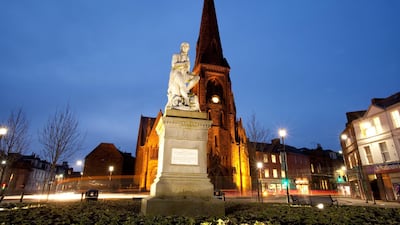January 25 can mean only one thing: I’m hungry.
My appetite always increases at this time of year. It’s a legacy of having grown up in Dumfries, the capital of Burns country and a town where each year the Scottish bard’s birthday is celebrated with meals that are large enough to induce a food coma that can last until the middle of February.
The most extravagant of these dinners is the unambiguously named Big Burns Supper, an event where your main course is led to the table by a kilted piper, serenaded and then devoured in time for the evening ceilidh (a traditional Scottish dancing party). It’s what Rabbie would have wanted.
But while the supper serves up a buffet of Burns’s work and contemporary entertainment – this year Scottish solo artist K T Tunstall performs live in the Spiegeltent in Dumfries – my favourite memories of Burns Night instead comprise intimate family dinners at my parents’ house. We often ate together when I was younger, but January 25 was dressed up as a special occasion, with candles lit and extra plates laid out to accommodate the stacks of oat cakes bought from Marks & Spencer and presented nominally as a starter.
One after another, my two brothers and I would step forward, cradling our plates in both arms as the bashed neeps (mashed turnip) and chappit tatties (mashed potatoes) were piled on, forming daunting mountain ranges of carbohydrates.
The notion of adding greens was never raised and the menu was always traditional: the neeps and tatties were served with haggis (the internal organs of a sheep, minced and stuffed inside its stomach, and lightly seasoned).
If that makes you feel a little queasy, then bear in mind that Scotland also had the gastronomic gall to deep-fry a Mars bar.
My wee mum, a keen Burns enthusiast to this day, was the architect of these annual family feasts and made sure that we didn’t forget why we were being fed so well.
She accessorised her outfit with the Burns tartan each year "because it's Rabbie's birthday", and wouldn't allow us to shovel any food into our mouths until she recited at least one verse of the Address to a Haggis. We had little choice but to wait patiently, leering at its honest, sonsy face as the last rites were given to this, in Burns's words, "great chieftain o' the puddin' race".
Indeed, the only other meal I can remember that observed such a strict etiquette was Christmas dinner.
Burns Night is marked in similar ways across Scotland, but it is especially appropriate to celebrate in Dumfries. The poet's influence is plain to see, with some of his most famous verses displayed on plaques or on monuments throughout the town centre, while a large marble rendering of the Scottish bard stares along the length of the High Street.
His house and mausoleum are also signposted clearly and bookend the Burns Trail, a walk designed to allow people to retrace his steps around Dumfries and visit his favourite haunts. The Globe Inn, where Burns etched a verse on to a window with a diamond ring, is perhaps the most famous. The trail continues to be a draw for groups from local schools and people from out of town keen to immerse themselves in a bit of tartan tourism.
Burns only lived in Dumfries for about five years, but he continues to keep the town on the map. For that alone, he deserves to be remembered this weekend, either with a few stanzas from a favourite poem or with a second helping of haggis. Or, as he would say: “We hae meat, an’ we can eat, an’ sae let the Lord be thankit.”
Amen, Rab.

